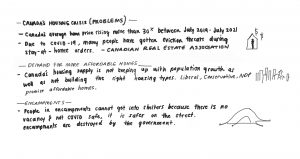
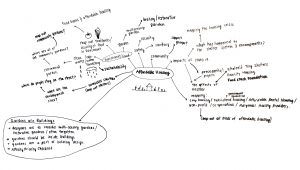
To wrap my head around the Canadian Housing Crisis, I began to list a few problem statements. This sparked a mind map which was centred around generating questions about the homeless community and their needs. I also thought about the affects of COVID-19 which have lead to community encampments in Vancouver and Toronto where the homeless were forcibly evicted by the government. I thought about mapping multiple support systems in Vancouver, for example organizations that ensure food security for the homeless and low-income people. Perhaps this mapping will help generate a design that can facilitate the exchange of these organizations and increase their support network.
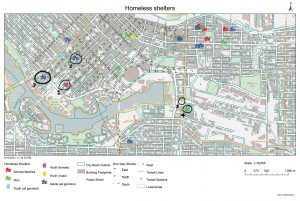
I decided to visit the following homeless shelters and modular housing to observe their functions:
1. Covenant House (Youth Female)
2. Hornby Shelter (Adult, all genders)
3. Metson Shelter (Adult, all genders)
4. Vancouver’s First Temporary Modular Housing (Not a shelter)
5. Aboriginal Shelter (men)
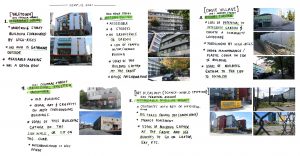
My notes were quick observations of the successfulness of circulation, access, and observing where people gathered to socialize.
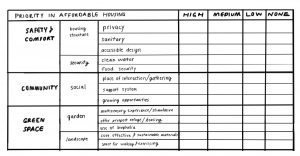
I created a hierarchy of what elements were important to a person seeking affordable housing and emergency housing. This matrix serves more of a check list toward what makes a space successful in providing fundamental needs of safety and comfort.

A preliminary diagram which visualizes the matrix.